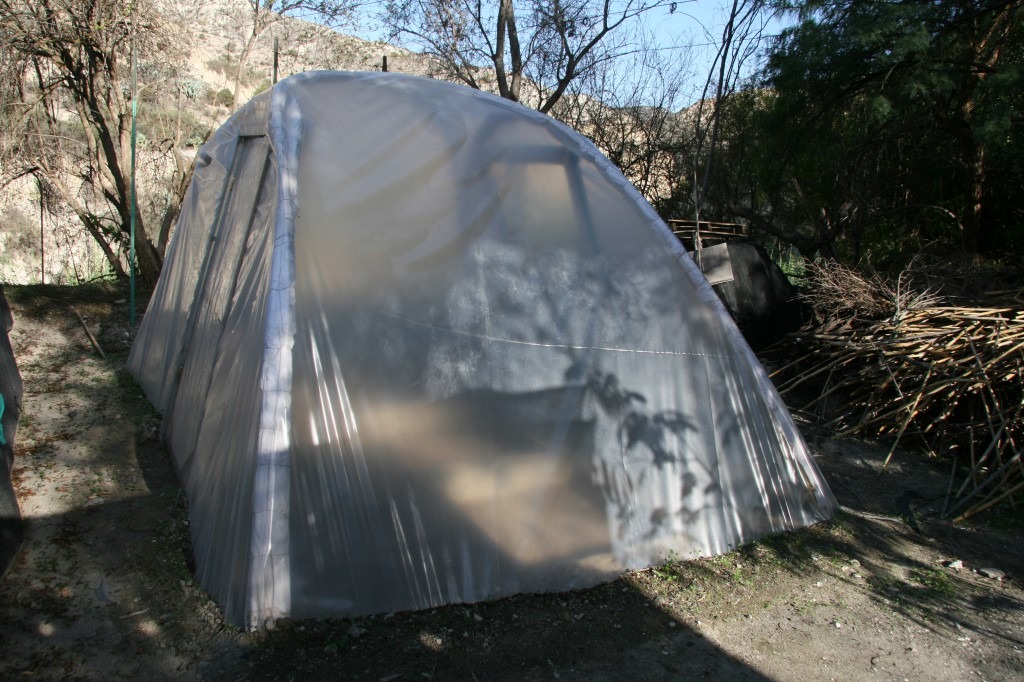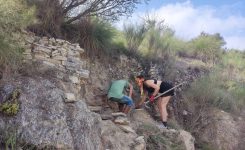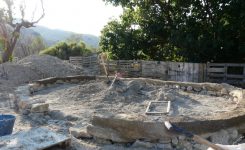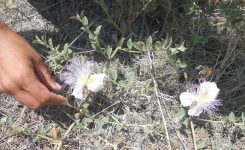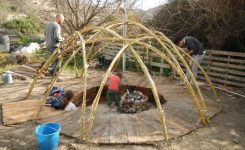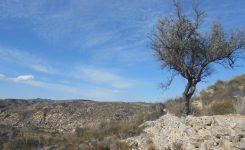Drylands Management, Eco Construction
Greenhouse
We have finally built the greenhouse for the seedlings from our nursery so they can spend the winter calentitas!
We are in a desert climate zone, so that the amplitude of temperature between day and night is quite large, and not only that, but the night temperature tends to be very low, causing frost. This situation is more pronounced in the botanical garden, as it is in a lower part of the valley, seriously affecting seedlings from the nursery.
In the nursery we germinated seeds that were collected during the past year for revegetation and regeneration of the area, and used as resources, such as carob. The seedlings that will be moved to the greenhouse are: albaida and albaidilla, genista, retama, black hawthorn and carob tree. Carob is the plant most affected by frost. The temperatures below 5 ° C can cause tree death, by the interruption of the flow of sap. Due to these reasons, we have built the greenhouse in the botanical garden, next to the nursery, in a sunny spot.
First, we have taken measurements of a similar structure from one of the gardens and adapted them to the space we have in the botanical garden. We dug a hole in each corner where the arches were placed and filled with gravel to support the structure, which once placed were covered with plaster and soil. The structure has been made with reed (peeled and cleaned) using a very simple technique: two bunches of about seven reeds are joined together to make the main arches, adding reinforcements in the area of attachment. These are carefully placed with the ends in each opposite hole (not across!) clutching the arcs to maintain the position. Two other arcs are placed to and from the bases of the main arches, across this time.
Once the structure is in place, the doors are installed in the center of the main arches and attached to the ground like the arches are held.
Next, a trench is dug around the perimeter of the structure and the plastic cover is placed. This is tensed and is buried in the trench. Finally, the gates are placed and plants, etc are moved in to the inside of the greenhouse, and enjoy!
Finalmente hemos construido el invernadero para que las plantas de nuestro vivero pasen el invierno calentitas!
Nos encontramos en una zona de clima desértico, por lo que la amplitud de temperatura entre el día y la noche es bastante grande, y no solo eso, sino que la temperatura nocturna tiende a ser muy baja, provocando heladas. Esta situación se ve más acusada en el jardín botánico, ya que se encuentra en la parte baja del valle, afectando gravemente a las plántulas del vivero.
En el vivero hemos germinado las semillas que fueron recogidas durante el año pasado para revegetación y regeneración de la zona, y aprovechamiento de recursos, como es el caso del algarrobo. Las plántulas que moveremos al invernadero son: albaida y albaidilla, genista, retama, espino negro y algarrobo. El algarrobo es la planta que más se ve afectada por las heladas. Las temperaturas inferiores a 5º C pueden originar la muerte del árbol, por la paralización de la circulación de la savia. Por ello, el invernadero lo hemos construido en el jardín botánico, donde llega el sol todo el día y cerca del vivero.
Primero se tomaron medidas de una estructura similar de uno de los huertos y se adaptaron al espacio que tenemos en el jardín botánico. Se cavó un agujero en cada esquina donde se colocaron los arcos y se rellenaron con grava para apoyo de la estructura, y una vez colocada se cubrió con yeso y tierra. La estructura la hemos hecho de caña (pelada y limpia) usando una técnica muy sencilla: se unen ramos de unas siete cañas entre sí para hacer los arcos principales, añadiendo refuerzos en la zona de unión. Estos se colocan cuidadosamente con las puntas en cada agujero que tienen enfrente sujetándose los arcos para que mantengan la posición. Otros dos arcos deben de ser colocados desde y hasta las bases de los principales en forma de cruz.
Una vez la estructura esté colocada, se instalan las puertas en el centro de los arcos principales y se sujetan al suelo igual que los arcos.
A continuación, se cava una zanja en el perímetro de la estructura y se coloca el plástico que la cubrirá. Este se tensa y se entierra en la zanja. Por último, se colocan las puertas y se trasladan las plantas, etc, a su interior, y a disfrutar!


